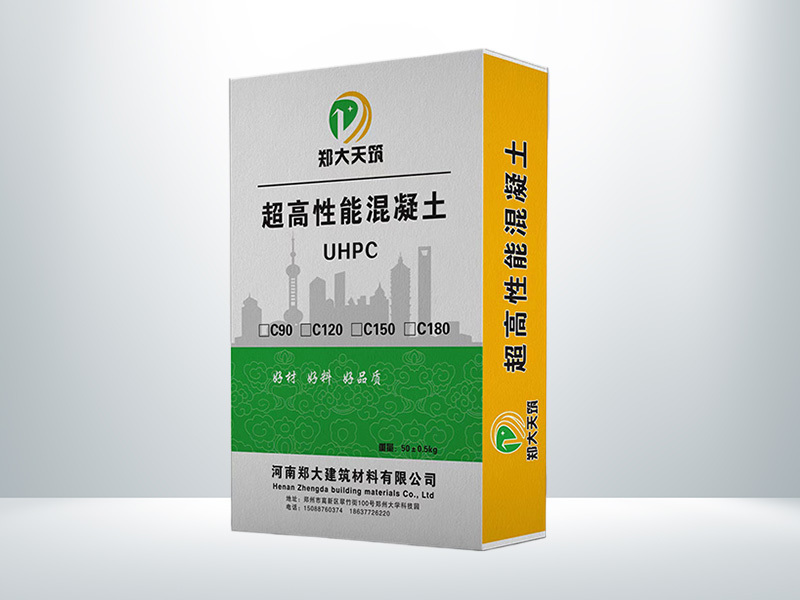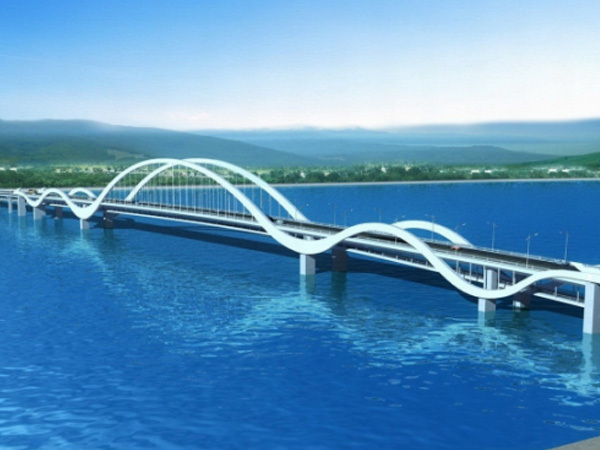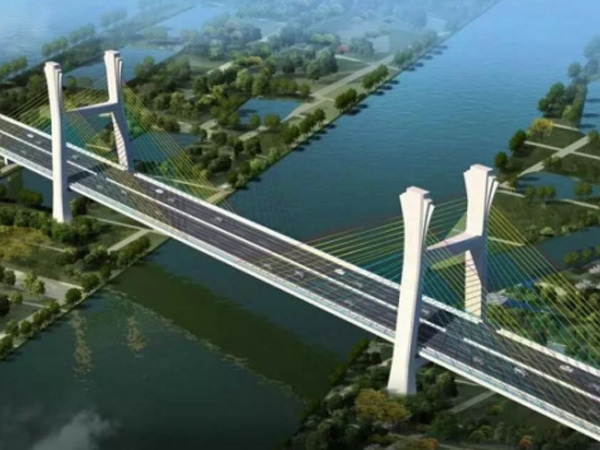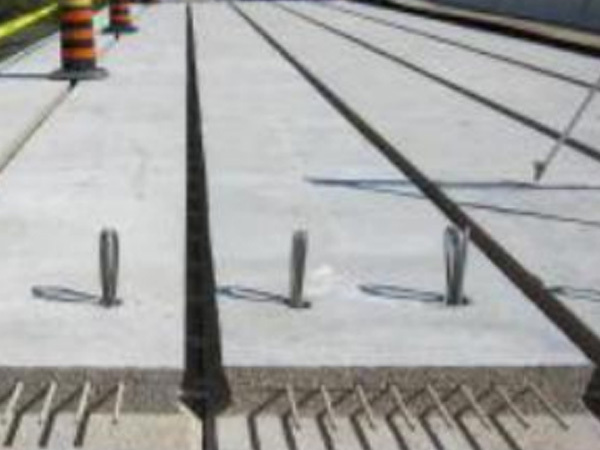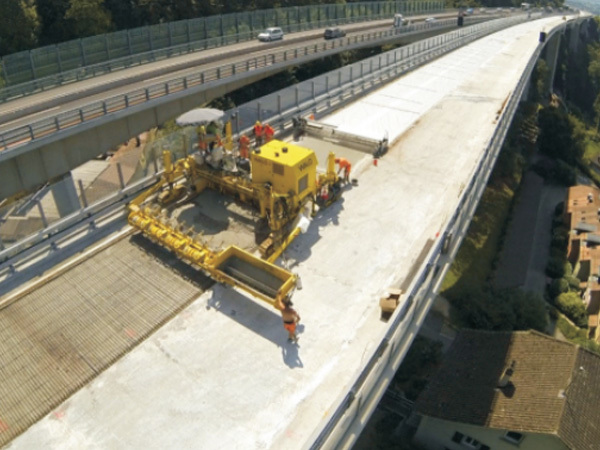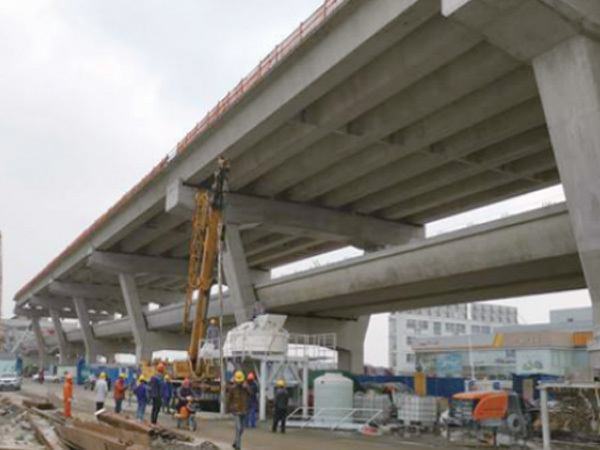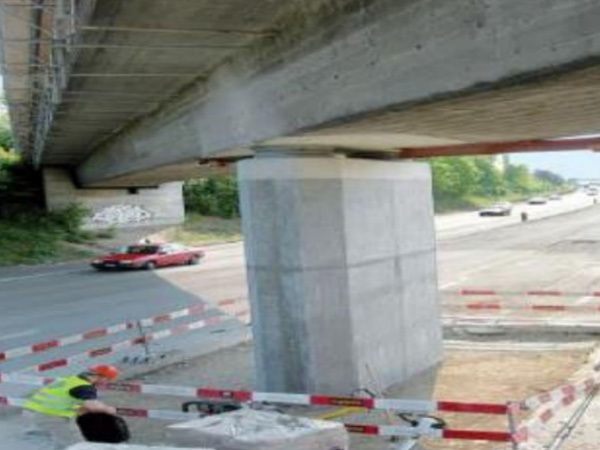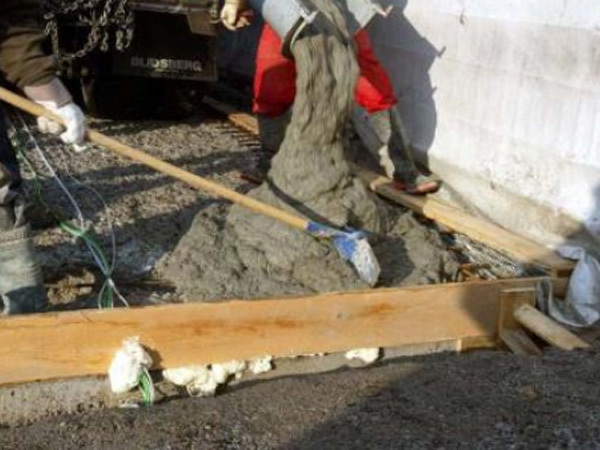UHPC bridge deck repair drawings
Ultra High Performance Concrete (UHPC)
Category:
Detailed description:
1. Overview of Ultra-High Performance Concrete Definition
Ultra-high performance concrete (UHPC), based on a solid theoretical foundation, replaces coarse aggregates with fine aggregates such as quartz sand, adds mineral admixtures rich in volcanic ash activity such as fly ash and blast furnace slag, adds short-cut fine fibers and high-efficiency water reducers, reduces pores and microcracks inside the material, controls the water-binder ratio, and achieves a compressive strength of not less than 150 MPa and a flexural strength of up to 40 MPa under high-temperature steam curing conditions, to obtain a new type of cement-based composite material with good toughness and excellent durability.
2. Performance Advantages of UHPC
Compared with ordinary concrete, UHPC has the following excellent properties:
(1) Ultra-high strength: UHPC has excellent mechanical properties, its compressive strength is generally not less than 150 MPa, and its flexural strength can reach 40 MPa, and there is no shrinkage phenomenon in the later stage.
(2) Excellent toughness: Compared with ordinary concrete, the fracture energy of steel fiber UHPC can reach 20000~40000 J/m2, the flexural strength is one order of magnitude higher, and the fracture energy is two orders of magnitude higher;
(3) Excellent durability: UHPC has a low water-binder ratio, a dense pore structure and a small porosity, giving it extremely low permeability, good corrosion resistance and excellent wear resistance;
(4) Adjustable shrinkage performance: Although the shrinkage of low water-binder ratio UHPC is greater than that of ordinary concrete, the shrinkage performance can be adjusted by adding appropriate mineral admixtures, fibers and admixtures, and the later shrinkage deformation of UHPC can be effectively reduced under the condition of heat curing;
(5) Good overall economy: Although the unit Price of UHPC is relatively high, especially for steel fiber UHPC, in actual engineering, the application of UHPC can not only reduce the amount of concrete used in components by nearly 2/3, but also improve the structural performance. The application of UHPC can also reduce the amount of reinforcement in structural components. Because of the good durability of UHPC, its service life can be longer. From the perspective of life-cycle cost, its Price is relatively economical.
3. Introduction of Non-Steam Curing Low Shrinkage UHPC Material
UHPC has ultra-high strength, ultra-high toughness and ultra-long durability, and has broad application prospects in bridge maintenance as a new generation of cement-based materials. However, in order to ensure its ultra-high mechanical properties and excellent durability, traditional UHPC requires high-temperature steam curing, and the shrinkage is relatively large, which cannot meet the actual needs of bridge maintenance in different situations. Therefore, the research and development of non-steam curing low shrinkage UHPC is extremely necessary.
(1) Basic Material Properties
|
Parameter |
UC120 |
UC140 |
UC160 |
|
Compressive Strength/MPa |
[120,140) |
[140,160) |
[160,180) |
|
Axial Compressive Strength/MPa |
≥95 |
≥105 |
≥120 |
|
Flexural Strength/MPa |
≥24 |
≥27 |
≥30 |
|
Tensile Strength/MPa |
≥7 |
≥8 |
≥9 |
|
Elastic Modulus/GPa |
≥43 |
≥47 |
≥49 |
|
Total Curve Shrinkage (μm/m) |
≤600 |
≤650 |
≤700 |
|
Impermeability |
≥P12 |
||
|
Freeze-thaw Resistance |
≥F800 |
||
(2) Application Scenarios
UHPC prefabricated assembled new bridges: energy saving and environmental protection; reduce structural self-weight; improve structural durability and bearing capacity
Prefabricated assembled new bridges
UHPC wet joints: save time; improve performance; no welding
Wet joint connection
UHPC bridge deck paving: ultra-thin overlay; improve bridge stiffness; improve structural fatigue performance
Bridge deck paving
1. Introduction of Early Strength UHPC Material
Bridge maintenance usually requires minimizing the impact on existing traffic, and can only be carried out without closure or partial closure of traffic, such as closing a certain lane within a limited time. Therefore, the maintenance time is very demanding, which also puts forward high requirements for the rapid development of the performance of maintenance materials. The development of concrete that can reach the design strength required for maintenance in a short time has a strong engineering background and needs, such as the replacement of expansion joint concrete. At the same time, not only the compressive strength of maintenance and repair concrete needs to be considered, but also its bonding and crack resistance are key indicators, and fiber reinforcement technology is worth noting. This product uses sulfoaluminate cement combined with ordinary Portland cement to prepare easy-to-construct early-strength repair UHPC with excellent workability, fast setting time, and excellent performance.
(1) Basic Material Properties
|
Parameter |
Age |
Performance Indicators |
|
Slump |
Initial |
≥260mm |
|
Compressive Strength |
3h |
≥32MPa |
|
28d |
≥100MPa |
|
|
Flexural Strength |
3h |
≥7.5MPa |
|
28d |
≥20MPa |
|
|
Initial Setting Time |
40~60min |
|
|
Final Setting Time |
90~120min |
|
|
Construction Requirements |
Pump able |
|
|
Curing Requirements |
Normal temperature water spraying curing |
|
(2) Application Scenarios
Repair and reinforcement: fast traffic opening; improve structural bearing capacity; reliable reinforcement performance
1. Construction Process and Precautions
(1) Mixing
UHPC material mixing should strictly follow the construction mix ratio requirements for accurate weighing, using a planetary or horizontal shaft forced mixer to mix the concrete.
(2) Pouring
Concrete with workability meeting the design requirements, the mold temperature is generally controlled at 5~30℃; pouring is layered continuous pouring, the gap time should not exceed 1.5h, and construction joints should not be placed arbitrarily.
(3) Vibration
Use an immersion vibrator to vibrate the poured concrete. When vibrating, avoid colliding with the formwork, steel bars, and embedded parts.
(4) Maintenance
To be closer to actual engineering applications, the maintenance method will primarily use mold maintenance, supplemented by watering maintenance, keeping the concrete surface moist, and the maintenance time is one week.
Key words:
Ultra High Performance Concrete (UHPC)
Previous Page:
Next page:
Message
Related Cases
Related Products

